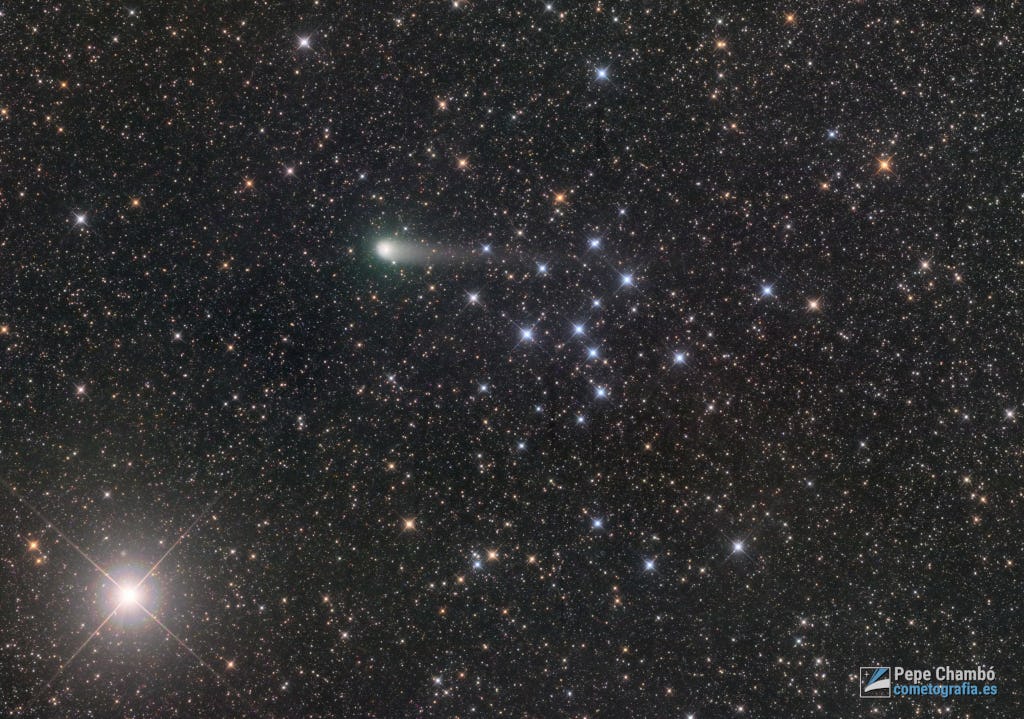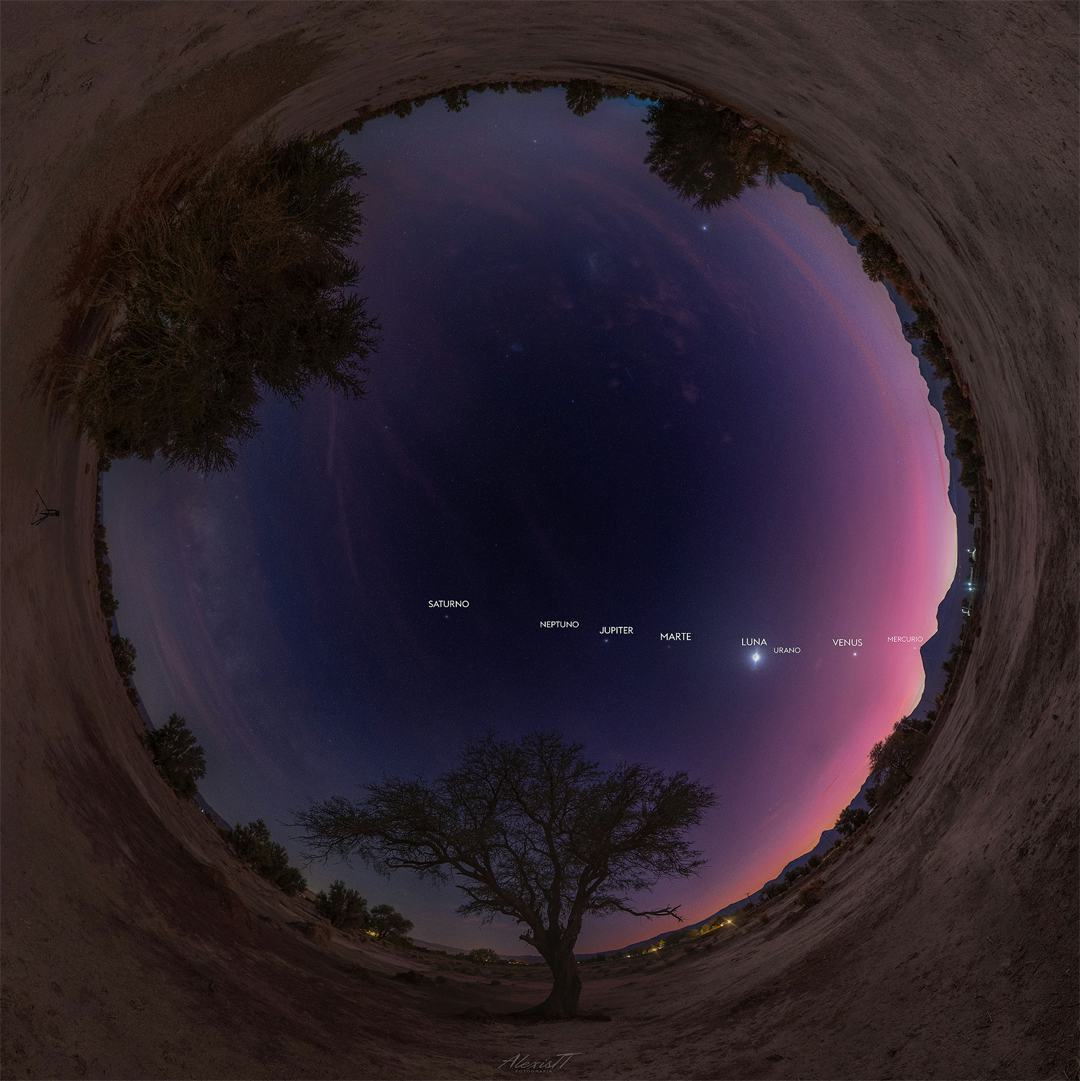She said to me,
"I can't recall yesterday,
what we did
or the words we said."
Public Posts Stanwood, WA Stanwood, WA (zoom)
NASA Astronomy Picture of the Day:
Stars trail through a clear morning sky in this postcard from a rotating planet. The timelapse image is constructed from consecutive exposures made over nearly three hours with a camera fixed to a tripod beside the Forbidden City in Beijing, China on June 24. Arcing above the eastern horizon after the series of exposures began, a waning crescent Moon left the brightest streak and watery reflection. On that date the planets of the Solar System were also lined up along the ecliptic and left their own trails before sunrise. Saturn was first to rise on that morning and the ringed planet's trail starts close to the top right edge, almost out of the frame. Innermost planet Mercury rose only just before the Sun though. It left the shortest trail, visible against the twilight near the horizon at the far left. Uranus and Neptune are faint and hard to find, but mingled with the star trails the Solar System's planet trails are all labeled in the scene.
Photo by Zheng Zhi
I sought the wood in summer
When every twig was green;
The rudest boughs were tender,
And buds were pink between.
Light-fingered aspens trembled
In fitful sun and shade,
And daffodils were golden
In every starry glade.
The brook sang like a robin—
My hand could check him where
The lissome maiden willows
Shook out their yellow hair.
“How frail a thing is Beauty,”
I said, “when every breath
She gives the vagrant summer
But swifter woos her death.
For this the star dust troubles,
For this have ages rolled:
To deck the wood for bridal
And slay her with the cold.”
I sought the wood in winter
When every leaf was dead;
Behind the wind-whipped branches
The winter sun set red.
The coldest star was rising
To greet that bitter air,
The oaks were writhen giants;
Nor bud nor bloom was there.
The birches, white and slender,
In deathless marble stood,
The brook, a white immortal,
Slept silent in the wood.
“How sure a thing is Beauty,”
I cried. “No bolt can slay,
No wave nor shock despoil her,
No ravishers dismay.
Her warriors are the angels
That cherish from afar,
Her warders people Heaven
And watch from every star.
The granite hills are slighter,
The sea more like to fail;
Behind the rose the planet,
The Law behind the veil.”
This poem is in the Public Domain.
Willa Sibert Cather (1873 – 1947) American writer known for her novels of life on the Great Plains, including O Pioneers!, The Song of the Lark, and My Ántonia. She was awarded the Pulitzer Prize in 1923 for "One of Ours", a novel set during World War I.
Cather achieved recognition as a novelist of the frontier and pioneer experience.
NASA Astronomy Picture of the Day:
Imaged on June 20 2022, comet C/2017 K2 (PanSTARRS) shares this wide telescopic field of view with open star cluster IC 4665 and bright star Beta Ophiuchi, near a starry edge of the Milky Way. On its maiden voyage to the inner Solar System from the dim and distant Oort cloud, this comet PanSTARRS was initially spotted over five years ago, in May 2017. Then it was the most distant active inbound comet ever found, discovered when it was some 2.4 billion kilometers from the Sun. That put it between the orbital distances of Uranus and Saturn. Hubble Space Telescope observations indicated the comet had a large nucleus less than 18 kilometers in diameter. Now visible in small telescopes C/2017 K2 will make its closest approach to planet Earth on July 14 and closest approach to the Sun this December. Its extended coma and developing tail are seen here at a distance of some 290 million kilometers, a mere 16 light-minutes away.
Photo by Jose J. Chambo
Fire burning bright,
A flickering light.
Wood is green,
Wet to you.
Smoke curls
Around the room.
Last night was different,
last night was strange.
You didn't know
our children's names.
You asked me again,
over and over to say,
"How many children do we have<
what are their names?"

Homemade Hawaiian fried rice with ham, pineapple, peppers, and onion drizzled with sweet and sour sauce, See recipe
Because the love of another
drove you away from me.
I hope you'll be happy,
happier than me.
"Good grief"
said he,
as he knocked
on the door.
"I had no
idea, you were,
on the 30th floor.
An emotional wreck,
I have become,
for I weep silently,
as I know what's to come.
A slow decline
and memory fades,
the eroding Dementia
is here, every day.
The veins stood out on
the side of his head.
The beat of his heart could
be seen pulsing away,
as the heart did its work.
A vein in your body,
a vein of gold.
Vane, as in Ego,
only the bold,
who think of themselves
before others, I'm told.
NASA Astronomy Picture of the Day:
Yes, but have you ever seen all of the planets at once? A rare roll-call of planets has been occurring in the morning sky for much of June. The featured fisheye all-sky image, taken a few mornings ago near the town of San Pedro de Atacama in Chile, caught not only the entire planet parade, but the Moon between Mars and Venus. In order, left to right along the ecliptic plane, members of this Solar System family portrait are Earth, Saturn, Neptune, Jupiter, Mars, Uranus, Venus, Mercury, and Earth. To emphasize their locations, Neptune and Uranus have been artificially enhanced. The volcano just below Mercury is Licancabur. In July, Mercury will move into the Sun's glare but reappear a few days later on the evening side. Then, in August, Saturn will drift past the direction opposite the Sun and so become visible at dusk instead of dawn. The next time that all eight planets will be simultaneously visible in a morning sky will be in 2122. Notable Submissions to APOD: Morning Planet Parade 2022 June
Photo by Alexis Trigo








.jpg?fit=crop&w=280&h=280&q=93)














 - Copy.jpg?fit=crop&w=280&h=280&q=93)


R.jpg?auto=format&fit=clip&w=600)





















